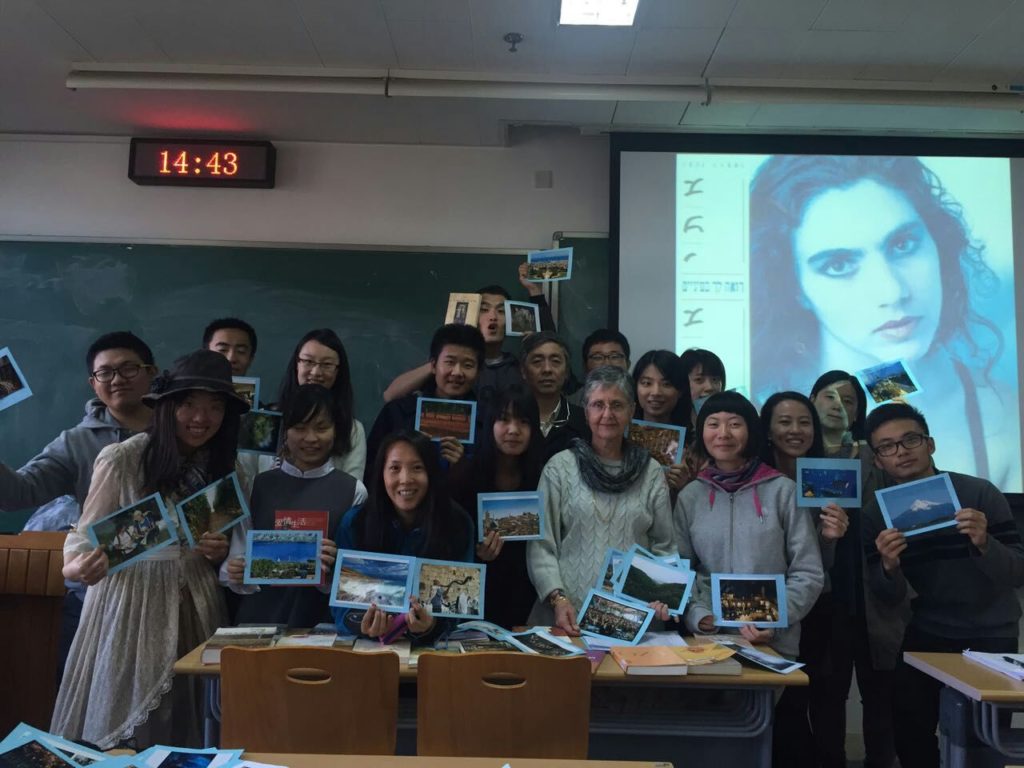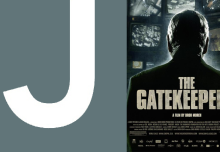innovative textbook for learning Biblical Hebrew, Hinneh – Biblical Hebrew the Practical Way, and translator of Arabic literature to Hebrew. She has been in Beijing, China since September 2015, teaching Modern Hebrew to Chinese students at the Peking University. In her essay, she describes the process of learning Mandarin, as she applies herself to speaking, reading and writing the ancient Chinese language.We encourage our readers to suggest other topics involving Jewish culture and other languages such as Hebrew, Yiddish, Ladino, French and Russian.

PHOTO: Rahel Halabe surrounded by her students holding images of Israel, at Peking University in China (February, 2016).
Searching online for more material other than textbooks, I was amazed by the number and quality of free Mandarin lessons for beginners available on YouTube. It was reassuring to find that you don’t have to read characters to learn basic conversation. At this initial stage, Pinyin (the transliteration in Roman letters used by first and second grade Chinese kids), is good enough for an adult beginner. The lessons all seemed pragmatic, starting from the ‘Ni Hao’ (Hello), basic polite expressions at introduction, numbers, shopping, ordering food in a restaurant etc. Surprisingly, relative to other languages I know, I found Chinese to be an easy language – no conjugation! A verb may have a single form for all persons and tenses. That was certainly encouraging. Seven tutoring sessions in both Jerusalem and Vancouver added some more personal sentences to my limited range: ‘I teach Hebrew (Sibolayu). I translate Arabic literature (Albowen). I am from Israel (Yiselie), Jerusalem (Yelusaleng) and live in Canada (Janada), Vancouver (Wengehua). I arrived at Beijing in September, and very quickly was dismayed because Beijiners did not understand my Chinese. Who said that Chinese is easy? If English was not an option (e.g. taxi drivers, grocery stores), I had to resort to sign language and printed addresses in Chinese characters. Pleco, the app on my newly-bought Chinese smartphone, came to my rescue! It translates both ways between Pinyin Chinese and English, gives you the tone indicator, the Chinese character, and even allows you to listen to two different people pronouncing each word. If the store seller did not understand that I was looking for an electric air purifier (a must in Beijing), As the weeks go on, I find to my surprise, that I can manage to read a long paragraph printed in characters. The text is simple. I have to refer to the textbook, the indispensable Pleco, as well as educated-guessing based on context, for the first or second time; but by the third time, I am reading Chinese. Hurray! And I am not doing worse than the younger students. They may have better aptitude, but I may be compensating for that with better learning strategies based on my experience. Recently, I have been understood when asking for a smaller size sweater I like, exclaiming that this hat is too expensive, telling the taxi driver to turn right just before the bridge, or asking the grocer if she has bananas or tomatoes today. Believe it or not, in Beijing I have neglected my regular Tai Chi exercises, but I am trying to keep my brain fit. Is learning Chinese a good way to do it? At least as good as Sudoku. Xin Nian Kuaile – Happy New Year!
Rahel Halabe, Beijing.





